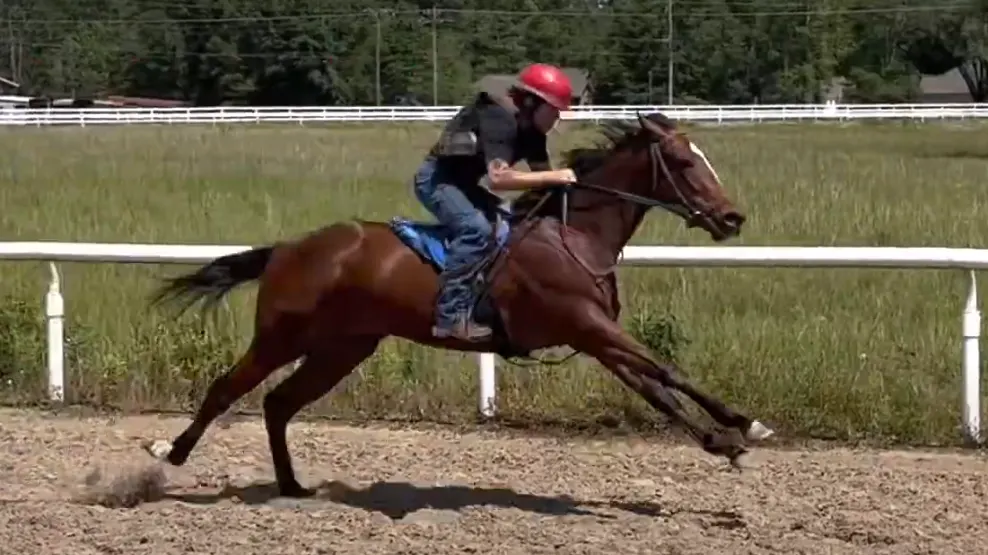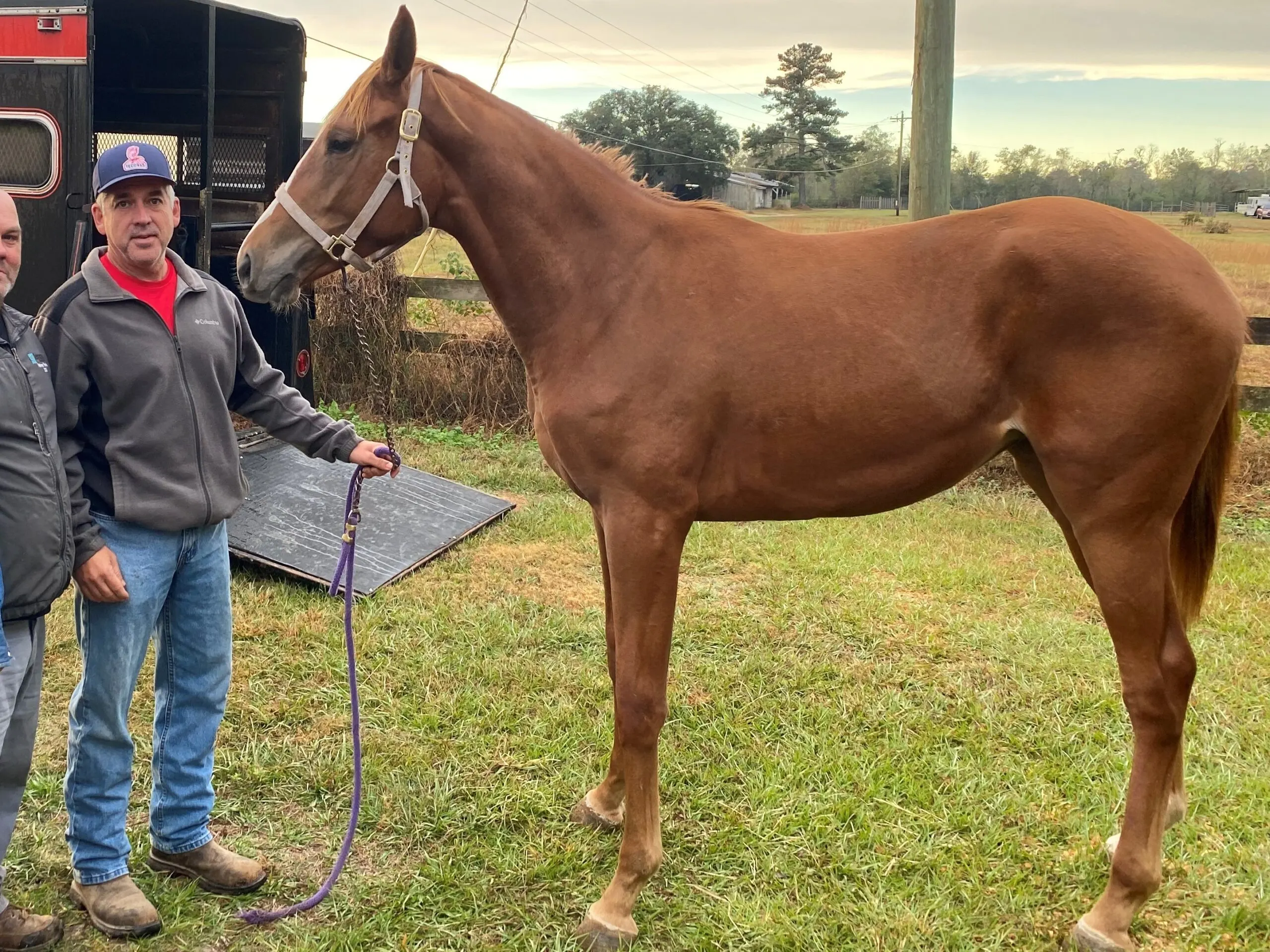Last updated: February 5, 2024
Did you know that horseback riding can burn as many calories as moderate-intensity exercises like cycling? Drawing from my experience with horses, including the care and training of my six horses, I’ve gained firsthand insight into the physical demands of riding.
This article answers this common question: Is horseback riding exercise? We’ll explore the physical benefits and challenges of horseback riding, shedding light on its effectiveness as a workout beyond its recreational appeal.

Physical Benefits of Horseback Riding
Cardiovascular Health:
- Boosts Heart Health: According to the American Heart Association, activities like horse riding can improve heart function and circulation. It engages the heart with moderate-intensity exercises, enhancing circulation and heart function.
- Aerobic Exercise: A study in the Journal of Physical Activity and Health shows riding increases heart rate to 50-80% of its max, ideal for aerobic conditioning.
- Disease Prevention: Regular sessions can strengthen the heart and reduce heart disease risk.
Muscle Strength and Toning:
- Core Engagement: Works abdominals, back, and pelvic muscles crucial for posture.
- Leg Work: Inner thighs and glutes get a workout, stabilizing the rider.
- Unique Workout: Mix of isometric and dynamic exercises for strength and tone.
Balance and Coordination:
- Stability: Constant body adjustments improve balance on a moving horse.
- Therapeutic: Recommended for enhancing motor coordination and proprioceptive skills.
- Core Strengthening: Engages core muscles, essential for stability and posture.

Mental and Emotional Benefits of Horse Riding
Stress Reduction and Mental Well-being:
- Tranquility: Riding and caring for horses reduce stress, fostering a sense of peace.
- Therapeutic Effect: Studies and testimonials highlight its calming effect, lowering anxiety levels.
Cognitive Benefits:
- Enhanced Focus: Requires constant awareness and decision-making, sharpening concentration.
- Memory Boost: Navigating different terrains and remembering patterns improve cognitive functions.
Summary of Horse Riding Benefits:
| Aspect | Benefits |
|---|---|
| Cardiovascular Health | Tones muscles and enhances strength. |
| Muscle Strength | Reduces stress and boosts mood. |
| Balance & Coordination | Sharpens concentration and enhances memory. |
| Mental Well-being | Improves balance and enhances coordination. |
| Cognitive Benefits | Fosters empathy and enhances emotional health. |
| Accessibility | Inclusive, adaptable to individual needs. |
| Emotional Connection | It Sharpens concentration and enhances memory. |
| Physical Challenge | Adaptable to fitness levels, promotes growth. |

Unique Aspects of Horse Riding as Exercise
Equestrian Yoga
- What It Is: A blend of yoga and horseback riding (FEI highlights the concept).
- Benefits: Improves flexibility, core strength, and riding technique. Enhances the rider-horse connection.
- Experience: Involves performing yoga poses on horseback, focusing on balance, posture, and breath control.
- Mindfulness: Encourages being present and in tune with the horse, enhancing the riding experience.
Horse Riding for Specific Health Conditions
- Therapeutic Riding: Offers benefits for individuals with physical disabilities or chronic conditions (The Helen Woodward Animal Center discusses its benefits).
- Physical Benefits: Improves mobility, balance, and strength. The horse’s motion can loosen muscles and enhance joint mobility.
- Mental Health: Effective for depression and anxiety, boosting self-esteem and providing a sense of purpose.
- Versatility: Demonstrates horse riding’s adaptability to fitness and therapeutic needs, making it inclusive for all.

Below is a YouTube video that shows how to ride horses to get fit.


FAQs: Is Horseback Riding Exercise?
Is horse riding effective for weight loss?
Absolutely. Horse riding burns up to 400 calories per hour, tones core, thigh, and glute muscles, boosts metabolism, and promotes an active lifestyle, making it a beneficial exercise for weight management.
How often should I ride a horse for exercise?
Regular riding, such as 2-3 times a week, is beneficial for consistent exercise benefits. However, frequency can vary based on individual fitness goals and schedules.
Can horseback riding improve cardiovascular health?
Yes, it increases heart rate and circulation, akin to moderate-intensity exercises.
Can beginners try horse riding for exercise?
Yes, beginners can start horse riding for exercise. It’s advisable to take lessons from certified instructors and start with a gentle, well-trained horse.
How does horseback riding compare to gym workouts?
Riding engages the body differently, focusing on core strength, balance, and coordination, offering a holistic workout not easily replicated in a gym.
Does horseback riding offer mental health benefits?
Absolutely. It reduces stress, enhances mood, and improves cognitive functions through mindfulness and interaction with horses.
Does horseback riding make your thighs and bum bigger?
Generally, your legs and bum will tone but not get bigger from horseback riding, but each person is different. Overweight people may trim their legs and bum, while skinny people could develop muscles through riding.

Conclusion: Is Horseback Riding Exercise? Yes!
Horseback riding is more than just a leisure activity; it’s a comprehensive form of exercise that offers numerous physical and mental health benefits. From burning calories and toning muscles to improving cardiovascular health and enhancing balance and coordination, riding provides a unique and enjoyable workout. Beyond the physical aspects, it also promotes mental well-being, reduces stress, and fosters a deep connection with nature and animals.
Call to Action:
Ready to saddle up? Start your horseback riding journey today and experience the myriad benefits for yourself. Whether you’re looking to improve your fitness, connect with nature, or simply try something new, horseback riding has something to offer everyone.
Additional Resources:
- British Horse Society – Discover more about the calorie-burning benefits of horseback riding.
- FEI Equestrian Yoga – Explore the unique blend of yoga and horseback riding for a holistic workout.
- Helen Woodward Animal Center – Learn about the therapeutic benefits of horseback riding for specific health conditions.
Embrace the journey of horseback riding as part of your exercise regimen and unlock the door to a healthier, happier you.
Meet Miles Henry
An avid equestrian and seasoned racehorse owner, Miles Henry brings his extensive experience to the equine world, proudly associating with the AQHA, The Jockey Club, and various other equine organizations. Beyond the racetrack, Miles is an accomplished author, having published various books about horses, and is a recognized authority in the field, with his work cited in multiple publications.
🔗 Connect with Miles:
Twitter
Facebook
YouTube: Check out race highlights, horse care tips, and more!

